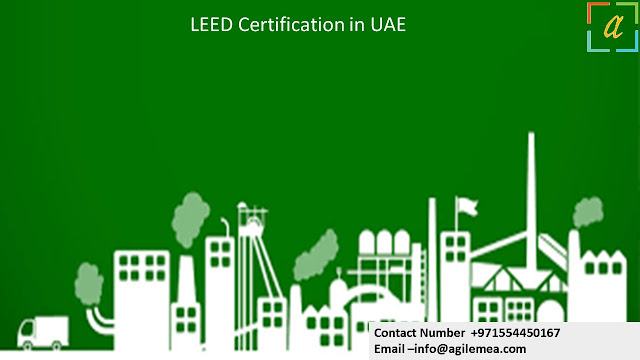Advantages of Green Building Certification with LEED
As an LEED Certification in UAE, the attainment of LEED certification is contingent upon executing strategies that promote energy efficiency, occupant well-being, and resource conservation. Buildings with LEED certification use systems and design choices that lower energy use, enhance indoor air quality and safeguard natural ecosystems. These can include external aspects like native landscaping and green roofs that manage runoff. Better indoor air quality for residents is achieved by carefully choosing materials and finishes, such as low-VOC (volatile organic compound) paint, which lowers allergies and other indoor pollutants. Buildings can use renewable energy sources to get LEED certification points, including solar photovoltaics and geothermal HVAC systems. Design and construction must adhere to LEED rating system requirements to receive LEED certification. Achieving LEED certification has both qualitative and quantitative advantages.
We are an LEED Certification in Dubai, Reduced running expenses and increased energy efficiency can result in significant long-term returns, even when the upfront investments are not typical of traditional construction. Throughout a building's lifespan, the initial investments might be offset by considerable profits thanks to state and federal subsidies. Furthermore, they foster goodwill because of the advantages LEED-certified buildings offer to the environment and their communities. Even though it might not always be measurable, this might serve as a differentiator when promoting to investors and customers. Almost any kind of project can obtain LEED Certification because there are multiple certification levels and categories. There are LEED rating systems for cities, neighborhoods, residences, interior design, building operations, new construction, and substantial renovations.
In our opinion as LEED Consultant, Buildings with LEED certification can have highly effective envelopes with advanced glazing technologies. The amount of energy required for heating and cooling is reduced using these features. Your building will be 30–60% more energy efficient when you include additional energy-saving elements like LED lighting and Energy Star appliances. Over time, this can save a significant amount of money on operations. Tight building envelopes and cutting-edge filtering systems that raise interior air quality are prerequisites for LEED certification. LEED-compliant buildings have lower levels of mound, mildew, and airborne contaminants. A building's or even a neighborhood’s dedication to sustainable operations and design is demonstrated by a LEED certification. Every LEED certification level honor high-performance structure that exceeds conventional construction requirements.
We are renowned LEED Consultancy, LEED offers a foundation for creating green buildings that are healthful, highly efficient, and economical, and it is available for almost all sorts of building, community, and residential project types. A worldwide recognized indicator of success in sustainability is LEED certification. The pursuit of LEED accreditation offers numerous advantages, and Dickinson's dedication to sustainability has made us a leader in sustainable residential developments and higher education institutions. Energy Star appliances, low-flow plumbing fixtures, and stormwater management elements like rain gardens contribute to decreased water usage. Every LEED Certified project includes elements for recycling and waste reduction. Over 80 million tons of garbage have been kept out of landfills by LEED-certified buildings.




Comments
Post a Comment